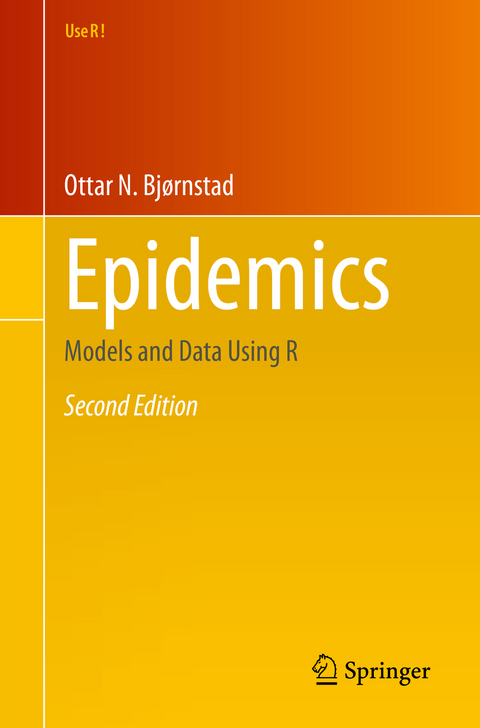
Epidemics
Springer International Publishing (Verlag)
978-3-031-12055-8 (ISBN)
Models and 'models-with-data' have proved invaluable for understanding and predicting this diversity, and thence help improve intervention and control. Using mathematical models to understand infectious disease, dynamics has a very richhistory in epidemiology. The field has seen broad expansions of theories as well as a surge in real-life application of mathematics to dynamics and control of infectious disease. The chapters of Epidemics: Models and Data Using R have been organized as follows: chapters 1-10 is a mix and match of models, data and statistics pertaining to local disease dynamics; chapters 11-13 pertains to spatial and spatiotemporal dynamics; chapter 14 highlights similarities between the dynamics of infectious disease and parasitoid-host dynamics; Finally, chapters 15 and 16 overview additional statistical methodology useful in studies of infectious disease dynamics.
This book can be used as a guide for working with data, models and 'models-and-data' to understand epidemics and infectious disease dynamics in space and time. All the code and data sets are distributed in the epimdr2 R package to facilitate the hands-on philosophy of the text.
Ottar Bjornstad researches population dynamics of epidemiological and ecological outbreaks. Focal systems includes human infections like measles, whooping cough, rubella, SARS-CoV-2 and influenza; animal infections like rabies, hantavirus and distemper; and outbreaks of various insects of biomedical and agricultural concern. He has expertise in statistical and computational approaches to the study of spatiotemporal dynamics, including the development of a suite of statistical methods for the analysis of spatial and temporal data as implemented in various R packages. Dr. Bjornstad is a Distinguished Professor of Entomology and Biology holds the J. Lloyd & Dorothy Foehr Huck Chair of Epidemiology at the Pennsylvania State University and is an elected fellow of the Norwegian Academy of Science and Letters, American Association for the Advancement of Sciences and the Ecological Society of America.
Chapter 1. Introduction.- Chapter 2. SIR.- Chapter 3. R0.- Chapter 4. FoI and age-dependent incidence.- Chapter 5. Seasonality.- Chapter 6. Time Series Analysis.- Chapter 7. TSIR.- Chapter 8.- Trajectory Matching.- Chapter 9. Stability and Resonant Periodicity.- Chapter 10. Exotica.- Chapter 11. Spatial Dynamics.- Chapter 12. Transmission on Networks.- Chapter 13. Spatial and Spatiotemporal Patterns.- Chapter 14. Parasitoids.- Chapter 15. Non-Independent Data.- Chapter 16. Quantifying In-Host Patterns.- Bibliography.- Index.
| Erscheinungsdatum | 15.12.2022 |
|---|---|
| Reihe/Serie | Use R! |
| Zusatzinfo | XV, 387 p. 155 illus., 75 illus. in color. |
| Verlagsort | Cham |
| Sprache | englisch |
| Maße | 155 x 235 mm |
| Gewicht | 617 g |
| Themenwelt | Mathematik / Informatik ► Mathematik ► Wahrscheinlichkeit / Kombinatorik |
| Medizin / Pharmazie ► Medizinische Fachgebiete | |
| Studium ► Querschnittsbereiche ► Epidemiologie / Med. Biometrie | |
| Studium ► Querschnittsbereiche ► Infektiologie / Immunologie | |
| Schlagworte | Age-incidence curves • contagions • Disease modelling • Endemicity • Epidemics • epidemiology • Infectious disease dynamics • nonlinear dynamical systems • Public Health Analysis • Recurent Epidemics • SEIR Compartmental Models • spatial analysis • Time Series Analysis |
| ISBN-10 | 3-031-12055-8 / 3031120558 |
| ISBN-13 | 978-3-031-12055-8 / 9783031120558 |
| Zustand | Neuware |
| Haben Sie eine Frage zum Produkt? |
aus dem Bereich


